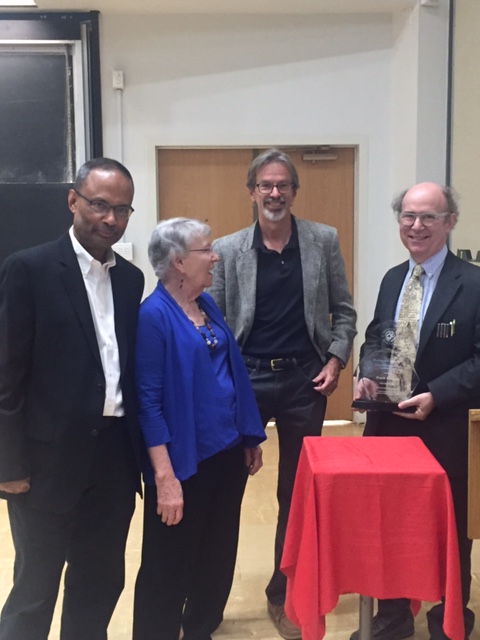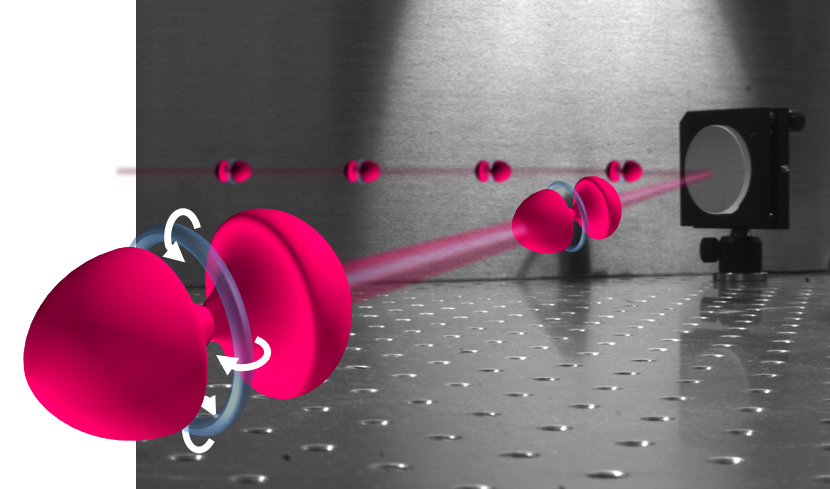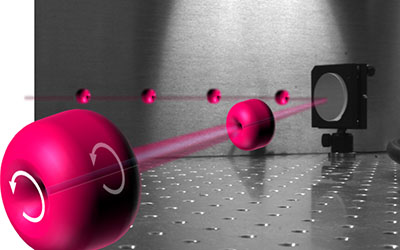- Details
-
Category: Department News
-
Published: Friday, September 23 2016 09:46
UMD Professors & Alumnus Named 2016 Thomson Reuters Citation Laureates
Yorke, Ott, Grebogi named top contenders for Nobel Prize in physics for developing method to control chaos
Two professors and an alumnus from the University of Maryland have been selected as 2016 Thomson Reuters Citation Laureates in physics. The Citation Laureates program uses a variety of criteria, including scientific research citations, to identify the most influential researchers who are likely to win the Nobel Prize.
The Citation Laureate trio includes Edward Ott, UMD Distinguished University Professor in the Department of Electrical and Computer Engineering, Department of Physics, and the Institute for Research in Electronics and Applied Physics; Celso Grebogi, UMD alumnus and the Sixth Century Chair in Nonlinear and Complex Systems at the University of Aberdeen in Scotland; and James A. Yorke, UMD Distinguished University Professor Emeritus in the Department of Mathematics, Department of Physics, and the Institute for Physical Science and Technology.
The scientists received the honor for their description of a control theory of chaotic systems that came to be known as the "OGY method," after the order their last names appeared in their paper describing the method. That paper, which has been cited 4,087 times according to the Web of ScienceTM, was published in the journal Physical Review Letters in 1990.
"Different people have different research goals. One of mine is to have an impact on the way other people work by providing them with interesting new ideas. Perhaps being named being named Citation Laureate is recognition that my collaborators and I are succeeding in that goal," said Yorke, who is known worldwide for coining the term "chaos."
While most researchers try to avoid chaos in physical, chemical or biological systems altogether, Ott, Grebogi and Yorke developed a method to control chaos in such systems and even improve system performance. The basic idea begins with the significant observation that an infinite number of unstable periodic orbits are embedded in a chaotic attractor. To employ the OGY method, one selects an unstable orbit that yields improved performance and stabilizes it by applying small system perturbations to the attractor. However, the perturbation must be tiny compared with the overall size of the attractor to avoid significant modification of the system's natural dynamics.
"Our method renders an otherwise chaotic motion more stable and predictable," said Ott. "It was also the first method to take advantage of the attributes of chaotic dynamics and use them for a specific purpose."
Researchers have used the OGY method to control chaos in a variety of systems, including turbulent fluids, oscillating chemical reactions, magneto-mechanical oscillators and cardiac tissues.
"We are excited, but certainly not surprised, that University of Maryland faculty members and alumni are considered to be in the running for the Nobel Prize in physics," said Jayanth Banavar, dean of the College of Computer, Mathematical, and Natural Sciences at UMD. "Professors Ott, Grebogi and Yorke have authored classic works in the field of chaos theory, with far-reaching impact in areas including meteorology, the life sciences, computer science and economics."
Two UMD physics faculty members previously won the Nobel Prize in physics: Distinguished University Professor William Phillips in 1997 and College Park Professor John Mather in 2006. In addition, UMD alumnus Raymond Davis Jr., B.S. '37, M.S. '39, chemistry, received the Nobel Prize in physics in 2002.
"To appear in the 2016 Citation Laureates is a great honor," said Grebogi. "While we are delighted to be included, it is unlikely that we can compete this year against the Laser Interferometer Gravitational-Wave Observatory (LIGO) gravity experiment, the first direct detection of gravitational waves and a result long awaited since Einstein's prediction of gravity waves in 1916. It is, nevertheless, a privilege to have our work—which opened up a whole new area of research and changed philosophically our way of thinking about chaos—considered in the same company as such a significant breakthrough in physics."
The annual Citation Laureates study has predicted 39 Nobel Prize winners since 2002.
"Highly-cited papers turn out to be one of the most reliable indicators of world-class research, and provides a glimpse at what research stands the best chance at being recognized with a Nobel Prize," said Jessica Turner, global head of government and academia, Intellectual Property and Science, Thomson Reuters.
About UMD's Citation Laureates
Edward Ott received his bachelor's degree in electrical engineering from The Cooper Union in 1963, and M.S. and Ph.D. degrees in electrophysics from The Polytechnic Institute of Brooklyn in 1964 and 1967, respectively. In 1968, he joined the faculty at Cornell University and came to UMD in 1979. He is a fellow of the IEEE, the American Physical Society, the World Innovation Foundation, and the Society for Industrial and Applied Mathematics.
Celso Grebogi, M.S. '75, Ph.D. '78, physics, remained at UMD as a faculty member from 1981 until 2001, with appointments in the Department of Physics, Department of Mathematics, Institute for Plasma Research, and Institute for Physical Science and Technology. After serving as professor at the University of Sao Paulo's Institute of Physics, he joined the University of Aberdeen in 2005. He is a fellow of The Royal Society of Edinburgh, the Brazilian Academy of Sciences, the World Academy of Sciences, the American Physical Society, and the Institute of Physics.
James A. Yorke, Ph.D. '66, mathematics, came to UMD in 1963 as a mathematics graduate student and joined the faculty as an assistant professor in 1967. In 2003, he was awarded the Japan Prize, one of the most esteemed science technology prizes. He is a fellow of the American Physical Society, the American Association for the Advancement of Science, the American Mathematical Society, and the Society for Industrial and Applied Mathematics.
About the University of Maryland
The University of Maryland, the state's flagship institution of higher education, is one of the nation's preeminent public universities. A global leader in research, entrepreneurship and innovation, UMD is home to nearly 38,000 students, 10,000 faculty and staff, and 250 academic programs, and counts more than 344,000 alumni. Its faculty includes three Nobel laureates, three Pulitzer Prize winners, 51 members of the national academies and scores of Fulbright scholars. The institution has a $1.86 billion operating budget and secures $500 million annually in external research funding. For more information about the University of Maryland, visit www.umd.edu.
More information can be found at http://go.umd.edu/if7 or contact Abby Robinson, This email address is being protected from spambots. You need JavaScript enabled to view it..



